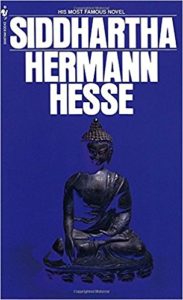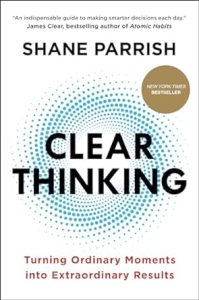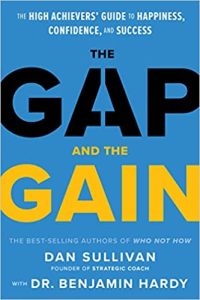I saw this book title on a few lists of books that everyone should read. I had no idea what it was about.
But I am very glad that I read this book.
The story of Siddartha is about a young man who leaves his family for a simple (very strong stoic themes) life.
He becomes bored with this life after meeting Buddha and realizing he will never have the same wisdom as him until he lives his life and finds his true Self.
He trades in religion for a life of sin. By becoming wealthy, sleeping with women, and gambling away his fortune Siddartha comes to understand what it is like to live like everyone else.
He grows weary of this lifestyle and contemplates suicide by a river one day.
He hears a unique sound in the river and it changes his life.
The ultimate goal of Siddarth’s life is to achieve peace and wisdom. You will have to read this book to find out if he completes his quest.
I strongly recommend this book to anyone who enjoys a short story that makes them reflect.
My takeaways
Life is transitory, what got you here, won’t always get you there. Be comfortable changing your beliefs and surroundings.
You cannot speak wisdom into someone’s life. They need to live life in order to become wise. Instead, you can speak knowledgeably about the wisdom you have achieved.
Don’t blindly follow people who claim to have answers to life. You must go within yourself to find these answers.
Fasting, patience, and prayer were Siddartha’s greatest strengths. He devoted his life to these exercises. What are your greatest strengths?
Unity of life. Everything connects and flows together. The past and the future meet at the present. Realize that destiny cannot control and be present in the moment and listen to what nature is telling you.
Summary of Siddhartha by Hermann Hesse
Siddhartha by Hermann Hesse is a philosophical novel that explores the spiritual journey of a man named Siddhartha during the time of Gautama Buddha. Through his quest for enlightenment, Siddhartha learns about the nature of self-discovery, the complexity of life, and the unity of all things. The novel is deeply influenced by Eastern philosophy, particularly Buddhism and Hinduism, and reflects on the themes of wisdom, self-realization, and the pursuit of inner peace.
Key Concepts:
- Siddhartha’s Early Life:
Siddhartha, the son of a respected Brahmin, grows up in a small village where he is expected to follow in his father’s footsteps as a spiritual leader. Despite his religious education and deep understanding of Hindu teachings, Siddhartha feels dissatisfied and restless, longing for a deeper truth. He believes that the wisdom he seeks cannot be found through traditional teachings and rituals. - Life as an Ascetic:
Siddhartha leaves his home, accompanied by his close friend Govinda, to join a group of ascetics known as the Samanas. The Samanas practice extreme self-denial and meditation to achieve enlightenment. Siddhartha immerses himself in this lifestyle, renouncing worldly pleasures and attempting to transcend the physical world. However, he eventually becomes disillusioned, realizing that deprivation alone will not lead to enlightenment. - Meeting the Buddha:
Siddhartha and Govinda encounter Gautama Buddha, whose teachings of the Middle Way and the path to enlightenment attract many followers. While Govinda decides to join Buddha’s order, Siddhartha chooses to continue his own path. Though he respects the Buddha’s teachings, Siddhartha believes that true enlightenment cannot be taught by another person; it must come from personal experience. - Worldly Life and Desire:
Siddhartha ventures into the material world, where he meets a courtesan named Kamala. Under her guidance, Siddhartha learns the art of love and indulges in the pleasures of the flesh. He also becomes a successful merchant, working for a businessman named Kamaswami. Over time, Siddhartha accumulates wealth and experiences worldly desires, but this life leaves him feeling spiritually empty and disconnected from his true self. - Siddhartha’s Crisis and Transformation:
Overwhelmed by the futility of his indulgent lifestyle, Siddhartha falls into despair and contemplates ending his life. However, he experiences a profound awakening by a river, realizing the interconnectedness of all life. He recognizes the cyclical nature of existence—birth, death, and rebirth—and begins to understand that enlightenment comes from embracing life in its entirety rather than rejecting it. - The Wisdom of the River:
Siddhartha forms a deep connection with the river, which becomes a powerful symbol of unity, change, and timelessness. He learns from the river’s constant flow and its ability to remain the same yet ever-changing. Siddhartha meets a ferryman named Vasudeva, who teaches him to listen to the river. Through this, Siddhartha gains wisdom and inner peace, understanding that life’s essence is in the present moment and that all things are one. - Reunion with Govinda:
Toward the end of the novel, Siddhartha encounters Govinda again, who is still seeking enlightenment. Govinda, who has followed the teachings of the Buddha, fails to recognize that Siddhartha has attained a deeper understanding of life. Siddhartha explains that wisdom cannot be conveyed through words or teachings but must be experienced directly. In a moment of realization, Govinda sees in Siddhartha’s face the unity of all existence, signifying his enlightenment.
Themes:
- The Search for Enlightenment:
The novel explores the idea that true enlightenment is a personal journey that cannot be taught or imposed. Siddhartha learns that knowledge can be transmitted, but wisdom and spiritual fulfillment come from lived experience and self-discovery. - The Unity of All Things:
A key theme in Siddhartha is the interconnectedness of all life. The river serves as a metaphor for the unity of existence, showing Siddhartha that time, events, and all living things are part of a larger, harmonious whole. - Detachment vs. Engagement:
Siddhartha’s journey shows the balance between detachment from the material world and engagement with it. His time as an ascetic, contrasted with his life of indulgence, teaches him that extremes are not the path to enlightenment. Instead, it is the acceptance of life’s contradictions—suffering and joy, desire and detachment—that leads to peace. - Self-Reliance and Individualism:
Siddhartha’s journey highlights the importance of self-reliance and personal experience. While he respects the teachings of others, he ultimately believes that each person must find their own path to enlightenment, free from external doctrines or authority.
Conclusion:
Siddhartha by Hermann Hesse is a timeless exploration of the spiritual quest for meaning and enlightenment. Through Siddhartha’s journey, Hesse illustrates that true wisdom comes from embracing life in its fullness, recognizing the unity of all things, and learning from personal experience rather than relying solely on teachings. The novel’s blend of Eastern philosophy and introspective narrative makes it a profound meditation on the human condition, the pursuit of spiritual growth, and the realization of inner peace.
Join The Newsletter
Get occasional emails from me when I publish new projects and articles.



